Burgundy bargains?
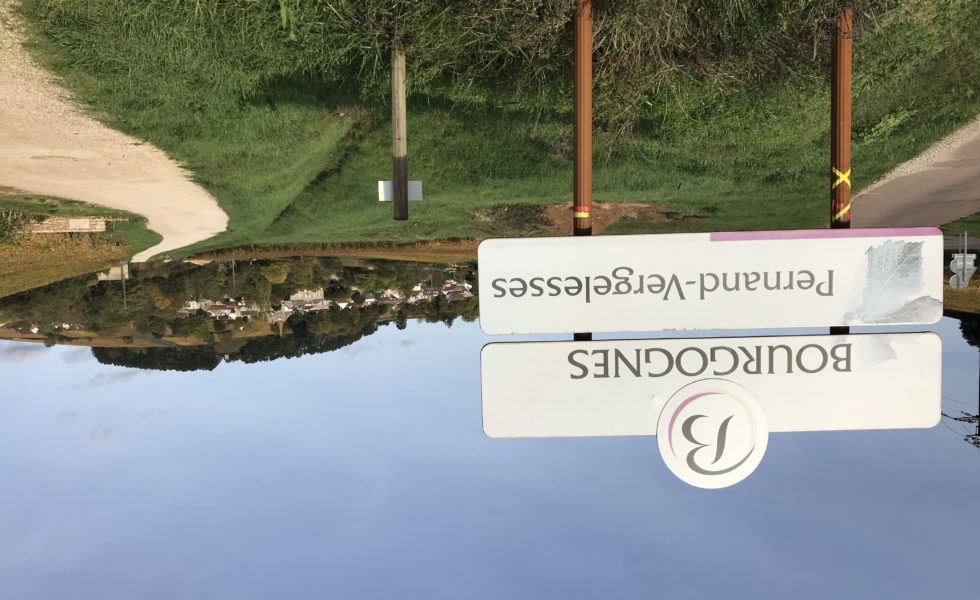
Sure, at Pernand Vergelesses
By Panos Kakaviatos for wine-chronicles.com
29 October 2019
In Beaune at the Centre Interprofessionnel Techniques des Vins de Bourgogne, I was welcomed earlier this month by tasting director Hervé Bianchi, to assess nearly 30 white Côte de Beaune wines from 13 producers – both premiers and villages crus – from the somewhat under-the-radar appellation of Pernand Vergelesses.
Tucked into valleys among the hills of Côte de Beaune, Pernand-Vergelesses straddles the famous Hill of Corton and Aloxe-Corton and Ladoix-Serrigny, harboring prestigious Grands Crus of Corton in red and Corton-Charlemangne in white.
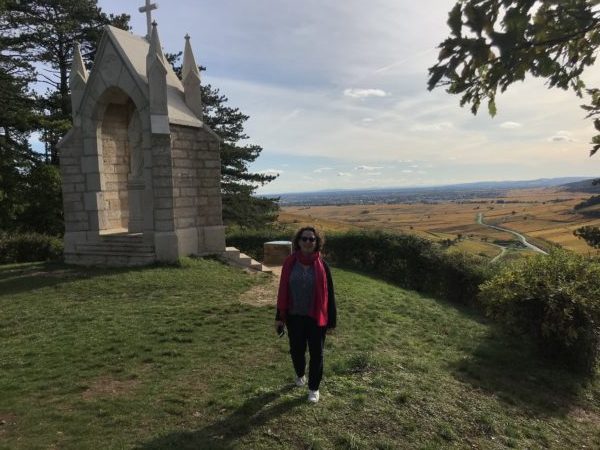
After the tasting, Bourgogne Wine representative Cécile Mathiaud, pictured above, drove me to the 385-meter high Frétille Hill, overlooking the premier cru Pernand Vergelesses vineyards of Sous Frétille (officially recognized as premier cru in 2000). The gorgeous autumn day proved perfect for photos, as you can see!
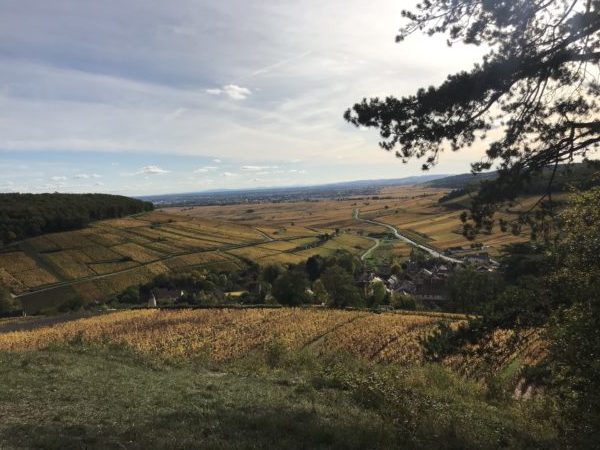
From this high vantage point, the sloping sites of the appellation are in evidence, with various exposures from south/southeast to north, the latter proving to be more favorable in hot vintages that seem to be coming more often with climate change.
Lower slopes feature clay-limestone soils mixed with “chaillots” (flinty residues from silcaceous limestones). These soils are easily worked and rich in potassium and phosphoric acid. Mid-slope, the pebbly limestone soils suit the Pinot Noir. Higher up, brown or yellowish marly soil harbors Chardonnay, which, as the tasting showed, can do very well in a good vintage like 2017. For its size (about 64 hectares producing whites and 80 hectares producing reds), the appellation’s various sites with different expositions are well explained in this video with Jean-Pierre Renard.
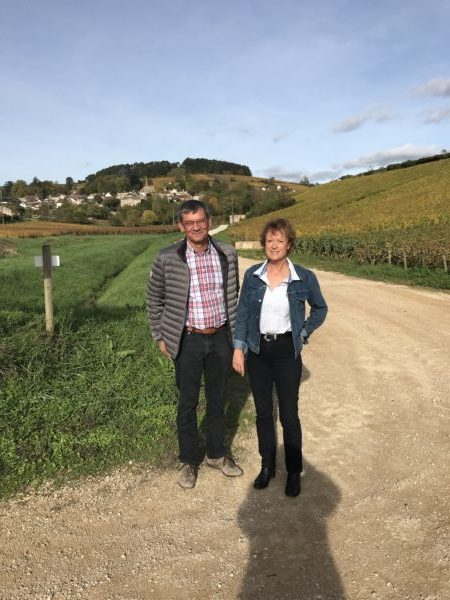
Over lunch at the excellent Ermitage de Corton, Vintners Rémi Rollin (of the excellent Domaine Rollin) and Françoise Jeanniard of the eponymous vineyard (pictured above) told me that Pernand Vergelesses soils are not quite as impressive as the best of the grand cru Corton vineyards, which have more limestone, Rollin said. Indeed, Hervé Bianchi referred to Pernand Vergelesses as the “child” of Corton Charlemagne. Could well be, but my tasting proved that among the “children” one finds wines worthy of the “parents” – and for less money.
As Jasper Morris pointed out in his 2010 book, Inside Burgundy, some recently named premiers crus vineyards – including Sous Frétille and Clos du Village – are particularly fine for white wines.
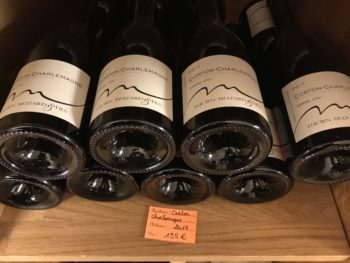
An excellent wine, but at €135 a bottle…
Sure, I have tasted Corton Charlemagne wines that are superior to any of the Pernand Vergelesses whites that I tasted during my late October 2019 visit here, but the prices of this latter appellation have remained very reasonable: “We have not seen the kind of price hikes in this appellation as compared to ones from more famous appellations”, Bianchi said. Could that also have something to do with the fact that two-syllable appellations like Corton and Meursault are easier to pronounce, I half joked.
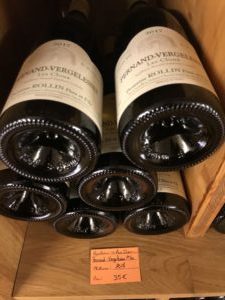
From vineyards close to Corton Charlemagne, this wine is not likely four times less interesting than the wine pictured above left.
At the famous Fromagerie Alain Hess cheese shop in Beaune – which also sells wines and organizes wine and cheese tastings – it was revealing to see one of my favorite Pernand Vergelesses whites that I tasted, the Rollin Père & Fils Les Cloux, displayed next to a Corton Charlemagne from the same 2017 vintage for sale. The latter, at €135 a bottle, cost nearly four times as much, but I would bet that amount of money that the qualitative difference is not four times different.
The general impression I got from my blind tasting of the whites from this appellation is of wine not big like Meursault and not quite as crisply precise as top Chablis, but somewhere in between, and often with citrus, honeysuckle and white floral aspects that add lift on finishes. Many of these 2017s needed to be carafed, to loosen up. And they displayed fine grip and brisk acidity, nicely framed by palate richness.
In short, you can find excellent white Burgundy that could retail in the U.S. for as little as $40 a bottle from Pernand Vergelesses, which counts eight premiers crus terroirs. Notes taken are in two flights, both tasted blind.
Blind tasting : proof in the pudding 😉
The first flight was village level wines. The second, a shorter flight, of premiers crus. I went through each wine again to compare notes with Bianchi, in a kind of debriefing. We often agreed. While not all wines were excellent, many were. As usual, if in bold, I liked in particular. If red and bold, even more. If underlined, too, a potential wine nirvana.
Flight One: Villages
#9 (Domaine Pierre Bourée et Fils) – This has a slightly evolved look. Some nutty aspects along with white stone fruit on the nose and baked apple. A full-bodied, gastronomic appeal, but the overall expression is somewhat simple, lacking the finesse of better wines tasted today. Pricing and availability: Interesting to note that I could not find the 2017 on Wine-Searcher.com and the vintages available in the U.S. came out to be about $60 a bottle. From the cellar, it costs about €33. At that price, you can do better. 88/100
#12 (Domaine Denis Père & Fils) – Lighter in color and looking like its youthful age. This has a more balanced aromatic profile, cooler fruit. A tad steely. But it has bright lemon and could go well with shellfish. Bianchi agrees that this is superior and a “vin de guard” and can be also set forth as an example of a “textbook Pernand Vergelesses”. Well, bravo. Average age of vines is 35 years old, with a yield at 55 hectoliters per hectare. Soil is limestone. Aged in 15% new oak. Only 8,000 bottles. This is quite a bargain at least in Europe, for it costs about $20 a bottle in Paris, and €16.50 from the winery (I am buying some). I found the 2015 vintage for under $40 at Chain Bridges Cellars in northern Virginia, so maybe friends from my hometown have experience with this wine? In any case, a decent price. 91+/100
#15 (Domaine Aurélie Berthod) – Color also more evolved looking, as in #9. Noticeable tears. This is a solid white, with palate richness to be sure, but also a touch of rusticity. I like the creamy texture! White stone fruit. For Bianchi, a “belle matière”. Pricing and availability: From the property, only €18, but I could not find this wine in the U.S., either via Cellar Tracker or via Wine Searcher. Not quite as impressive to me as the preceding wine, but it has character. Only 1,800 bottles! 90/100
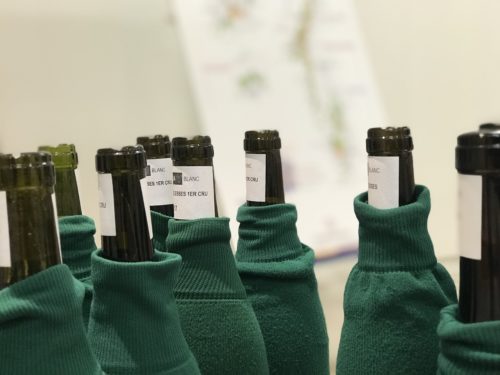
When you have well defined parameters, in this case a common vintage and a common appellation, blind tasting makes sense!
#7 (Domaine Rapet Père & Fils) – Lighter color. A bit steely at first, but with time in glass, it reveals that “Chardonnay of terroir” aspect of Burgundy, of wet stone note and lovely acidity. It got better as it sat in glass, with briskness to the palate. Bianchi especially liked its “chèvrefeuille” (honeysuckle) aspects. Serious wine, too, and the price is nice at €25 ex-cellar. Pricing and availability: It probably costs in the upper $30 range, and well worth your while. Although I prefer the Premier Cru Clos du Village by this talented producer, this is a very nice village level wine, coming from 21-year-old by average vines. 6,000 bottles. Apparently distributed in the U.S. by Weygandt Wines. 92/100
#26 (Domaine Françoise Jeanniard) – A bit reduced. Let it sit. This one starts to open up but the sulfite compacts the wine which may already be a bit tight on its own, so we put the wine in a carafe and waited one hour, after which the nose still shows sulfite; the wine has austerity and there is ripe fruit but it is … complicated for now, so my note would be reserved here. But I lean towards liking it with the sense that it will “come around” with a bit more time in the cellar, mainly because the other wine tasted in this series from this producer was one of my top wines from this tasting! Pricing and availability: The price is a reasonable €20 ex-cellar, although the wine is not available in the U.S. market. Just 2,000 bottles produced. 90/100
#1 (Maison Champy) – Coming from the well-known Maison Champy and not among the less expensive wines tasted (€34 ex cellar). It is a bit simple overall in expression, although it shows depth and grip. The color is somewhat evolved for its age, especially when compared to wines like Domaine Françoise Jeanniard, tasted just before this one. Average vine age is 45 years, and the wine is raised in 25% new oak. . Pricing and availability: I found the 2016 in the U.S. market for $40 retail, imported by Folio Fine Wine Partners. Not a bad price for fine Burgundy. The price is a reasonable €20 ex-cellar, although the wine is not available in the U.S. market. Just 2,000 bottles produced. 88+/100
#17 (Domaine Pavelot) – Problematic bottle, so we tried a second one, which is fine and more like #8, meaning nothing profound but easy to drink and relax with. There is a fine Corton like aspect, as Bianchi said, a “child of Corton” … I rather like sipping it! We agree that it is OK. Better than wine #1. Pricing and availability: Imported to Colorado by Stelvio Selections, this fine bottle of wine got better in glass – and the price is right at under €18 per bottle ex cellar, meaning about $30 in the U.S. 88/100
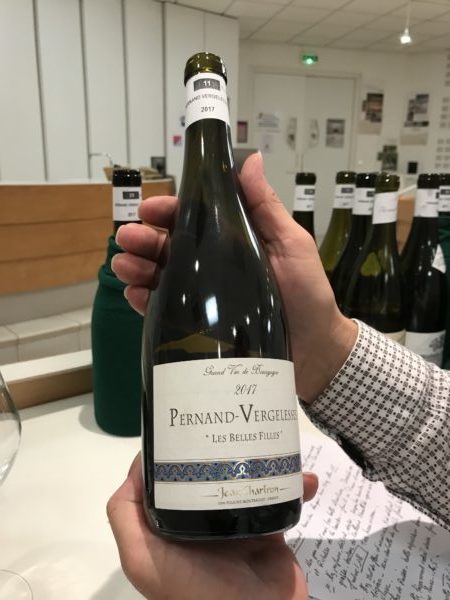
#11 (Domaine Jean Chartron Les Belles Filles) – Lovely, balanced nose, with poise and suggested opulence. There is some baked fruit and lemon notes. Mandarin orange. Somewhat steely, but I suspect it needs time. It has depth on the palate. Give it time in glass if you open today. The terroir is “very good” for whites: a steep slope covered in white marl, wrote Jasper Morris. Pricing and availability: Imported to the U.S. by Wine Bow, this estate is reasonably priced at under €26 ex cellar. Although I could not locate any vintage in Wine Searcher, it was listed on that platform for about $31 recently. 92/100
#8 (Domaine Rapet Père & Fils Les Combottes) – What is not to like? This is open for business, in a loose fitting jeans kind of style. The pleasing citrus notes with honeysuckle endear you. And while it does not reach the depth and length of some of the brighter stars of this tasting, it is fun to drink, conveying both charm and weight. Bianchi says it is already ready to drink at this youthful stage and another “textbook” example of what this appellation is. Just not as long as, say, wine #11. Pricing and availability: At €35 ex-cellar, I have found it in the U.S. on Wine Searcher for about $40, which is a decent price! Imported by Peter Weygandt. 90/100
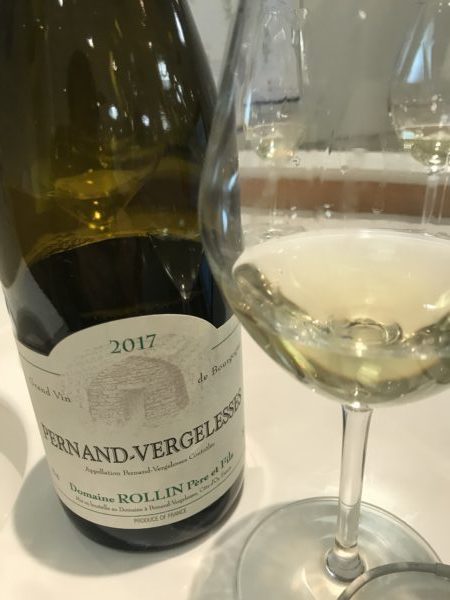
#22 (Domaine Rollin Père & Fils) – Medium lemon color. Wet stone aspect on the nose. This has a brisk aspect with substance and density. And brisk acidity. Very nice lime like freshness on the finish! Lovely expression of fruit that Bianchi found more “gourmand”. One of the top producers from this appellation for me. Indeed, Jasper Morris named this domain as one of several producers to “look out for” in Pernand Vergelesses. And just a village level. Bravo! Pricing and availability: Available in the U.S. on Wine Searcher for about $40+, which is an excellent price for the quality. Peter Weygandt. 92/100
#3 (Louis Jadot) – Not among the better wines tasted, and we opened two bottles to be more certain. While the first bottle was certainly off, the second bottle seemed somewhat tired, with burgeoning over-evolved mushroom aspects. Could it be that we had two off bottles? Note reserved. Pricing and availability: Available in the U.S. of course, as it is Louis Jadot, but pricing on the higher side, it seems when looking at Wine Searcher for close to $45 a bottle.
#14 (Domaine Aegerter) – Clean, crisp and smooth, exuding citrus and acacia. Somewhat candied aspect, but the fruit is ripe and up front. Not among the top tier for me, but more than solid. Interesting in that it has been aged in 100% new oak, which is not as present as one would expect. Coming from Jean-Luc et Paul Aegerter, the owners of eponymous wine shop in Beaune, and their wines have gotten better in recent years, many say. Pricing and availability: Not yet available in the U.S. but the price is on the higher side, at €39 ex cellar. 90/100
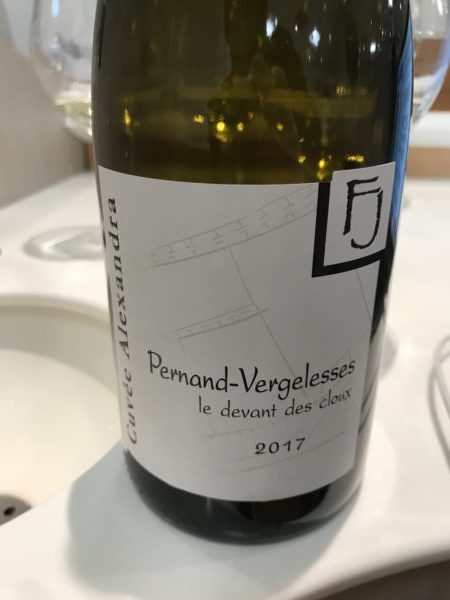
#25 (Domaine Jeanniard Françoise Cuvée Alexandra le Devant des Clous) – Lovely wet stone on the nose. This is like #26 but with less reduction – and it turned out to be from the same producer. Indeed, it shows a creamier texture and richness on the palate than #25, happily balanced by brisk and bright aspects. “Coquille de huître”, commented Bianchi, who gave it high praise. How can one resist that iodine freshness and the great name of the lieu dit as well. A serious wine, too, that requires some cellaring. Fermented at low temperatures to maintain freshness, only 1,400 bottles produced after having aged in 20% new oak. Pricing and availability: The price is a reasonable €23 ex-cellar – and I am buying some! The wine is not available in the U.S. market, but it should be. 92/100
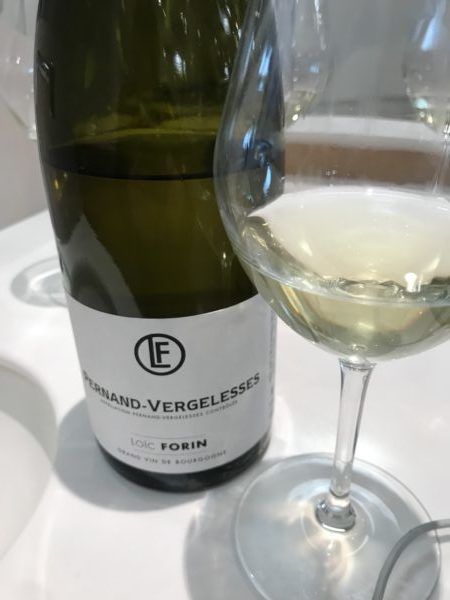
#10 (Maison Loic Forin) – Only 900 bottles from this producer and one of the stars of the show. It conveys a pleasing salty aspect with lift on the finish and a mouth filling mid palate. Bianchi found it to be his favorite wine in this series (18/20). He also found salinity. This has both generosity and elegance. Pricing and availability: The price is a more than reasonable €20 ex-cellar – and I am buying some! The wine is not available in the U.S. market, but it should be. 92+/100
#20 (Domaine Chanson Père & Fils) – The palate has more freshness than the somewhat dark, evolved color suggests. There is also agreeable approachable richness. Good job! And it would match scallops in a cream sauce. In fact, the more I try it, the more I like it! Not quite baked pear, but in that direction. Pricing and availability: It should be available in the U.S. market, but I could not find it on sale currently via Wine Searcher. 90/100
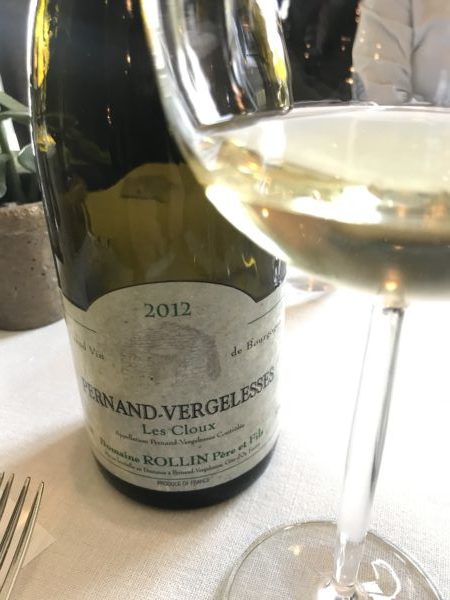
The 2017 was excellent and so was the 2012 over lunch. Very youthful, fresh and smooth – and that comes from a warm vintage.
#23 (Domaine Rollin Père & Fils Les Cloux) – Yet another fine performance from this producer, with both punch and brightness. I love the attack. This has “sustain” on the attack with mid palate richness. Iodine freshness that Bianchi says may be difficult for some to initially appreciate, but wow this wine punches above its weight! A bit austere at first, but it has underlying richness. Medium bodied elegance from a village level. Shaved almond freshness. This will last longer it seems to me than the #20. Yet another example of a “typical” Pernand Vergelesses, Bianchi says. And with staying power. Over lunch, we enjoyed the 2012 vintage, a warm vintage, and yet the wine was fresh and smooth and quite youthful. Pricing and availability: Have not seen it in the U.S. under Wine Searcher but it costs about $33 per bottle in the UK, an excellent price for the quality. 92/100
Flight Two:Premier Crus
#18 (Domaine Pavelot En Caradeux) – Color is a healthy lemon. Depth on the nose already! What pristine fruit and expression of refined elegance here. You get the richness but poise and refinement. Citrus fruit, ripe pear and wet stone. Much longer finish than most of the preceding wines. Bianchi’s second favorite wine of all tasted today. Pricing and availability: Imported by Stelvio Selections, their premier cru here is a clear step up and the price ex cellar is excellent at €24.80. 93/100
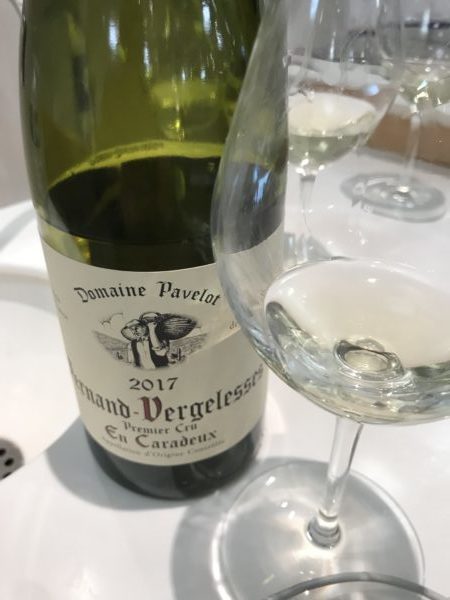
#13 (Domaine Denis Père & Fils Sous Frétille) – Closed on the nose, albeit the color is like the preceding wine. Slightly aggressive feel on the palate, lacking perhaps the pristine polished nature of the preceding wine, but nothing to spit at either. Has much richness and density and can stand up to fine roasted poultry in a champignon sauce for example. It needs time in bottle, and considering the quality of this terroir, I would give it an upward potential in terms of scoring. Pricing and availability: Only 5,700 bottles aged in more new oak than the village level wine (30%), I have not seen it in a U.S. shop, but it fetches about $50 in London. Expensive, but it should prove its mettle. Still, in terms of price/quality, go for the villages level. 91/100
#16 (Domaine Aurelie Berthod Creux de la Net) – More luminous tone to this wine as compared to the next one, whose color appears a bit flat. However the nose is a tad “plastic” like. I like the elegance and thankful brightness. Indeed, you want to go back to the ripe red apple aspect, with a hint of Halloween candy. Not bad. Pricing and availability: Unavailable in the U.S. market, but fetches €25 ex cellar. Only 3,400 bottles produced. 90/100
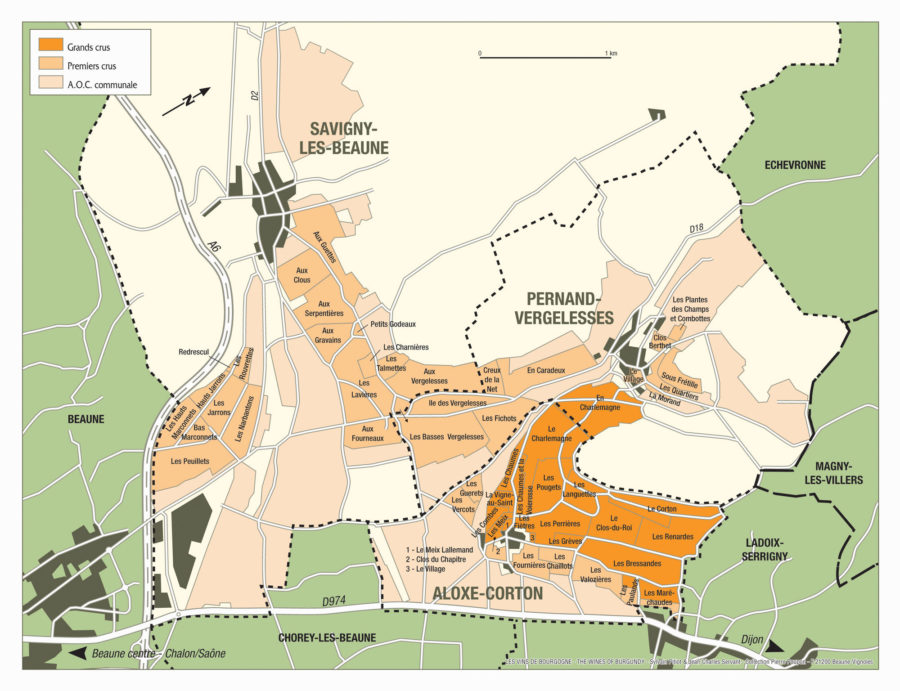
#6 (Domaine Rapet Père & Fils En Caradeux) – I like the density on the palate and length. The acidity is subtle, but very present. The fruit stands up to it, but I wonder if the balance could be better. Not bad, but not great. Pricing and availability: It probably should cost in the upper $50 range (indeed, $50 at Fine Wines International in California), given the ex cellar price of €45 a bottle. As said before, I prefer the Premier Cru Clos du Village, so I am not a fan in terms of price/quality ratios for this one. Maybe just a closed phase? 90/100
#4 (Domaine Rapet Père & Fils Sous Frétille) – Lovely tone of color, medium lemon. This is a tad austere (discretion assuré, remarked Bianchi) on the attack, but such brightness and “drinkability”. With time in glass, you get the density and ripe fruit on the palate. Worth buying to cellar. Pricing and availability: It costs in the upper $50 range ($50 at Fine Wines International in California and $59 in New York), given the ex cellar price of €47 a bottle. A more cohesive bottle than the En Caradeux, even if it is pricey. 92/100
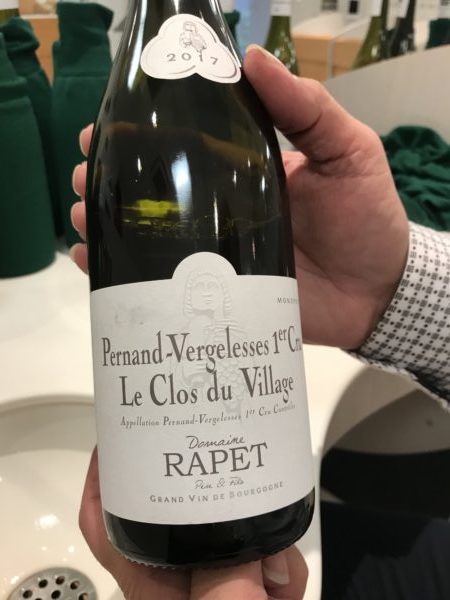
#5 (Domaine Rapet Père & Fils Clos du Village) – The sulfite and touches of matchstick on the nose are clear initially, but these aspects blow off with time in glass. The palate is welcoming with verve, and it would go well with snails, foie gras and seafood, especially oysters. More creaminess on the palate by comparison to the wine above, and the wine is serious here, too. Pricing and availability: I love the price/quality ratio as it costs €38 ex-cellar so prices in the U.S. would be closer to $40, although I could not find any using Wine Searcher. Clos du Village is a terroir that is 50 meters south of Sous Frétille, but there is much limestone here that lends freshness to the wine. One of the better wines of the tasting and fewer than 3,300 bottles produced. 93/100
#19 (Domaine Pavelot Sous Frétille) – A slightly excessive nail polish aspect to the first bottle prompted us to open a second. Pleasing fleur de vigne aspects to the nose and palate. The palate density is very impressive – perhaps due to the high average age of the vines at 49 – as it reflects wine that can stand up to many foods, from roast pork to turkey and sweet potatoes. Nice acidity on the finish, marked by clean and pure fruit aspects. Pricing and availability: The only hesitation I have is that the bottles retail for over $50. Not sure it is the optimal price/quality ratio, but it is a very fine bottle of white! 92/100
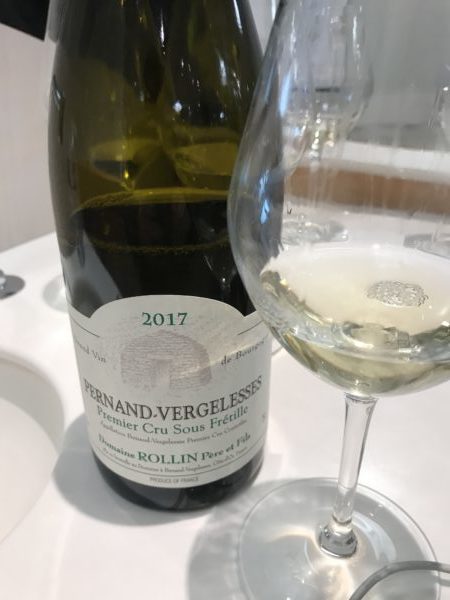
#24 (Domaine Rollin Père & Fils Sous Frétille) – Talk about savory richness! This has it on the palate, combined with verve that makes me think roasted poulet à l’orange. Or grilled pork in mango sauce. It has richness and acidity to stand up to both. Refined density and such length! This wine seems to realize best the potential of the terroir, that was only in 2000 recognized as premier cru. Pricing and availability: Could not find the 2017 but the 2016 fetches $60+ a bottle … not such a great price/quality ratio but my top wine of the tasting and likely half the cost of even an average Corton Charlemagne Grand Cru… 94/100
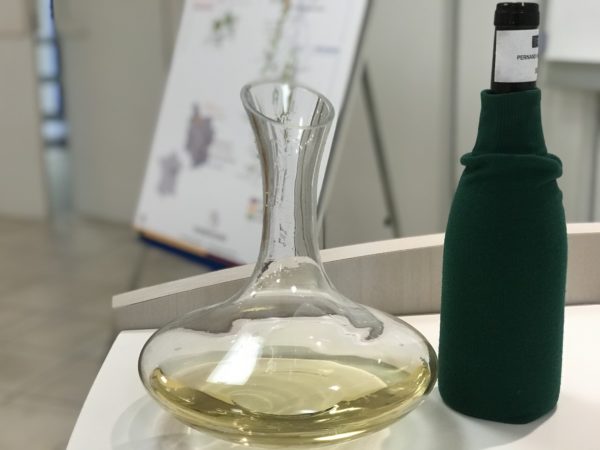
Several of these whites need to be carafed.
#2 (Maison Champy En Caradeux) – A slight note of cabbage/vegetal and a steely aspect on the nose precedes a palate that is however better than the nose suggests, with impressive density and a rather full-bodied feel. Notes of lemon and red apple, but a hint of bitterness on the finish however detracts. Pricing and availability: For $70 at Wine.com, clearly not a very good price/quality ratio. 89/100
#21 (Domaine Chanson En Caradeux) – Another wine with reduction on the initial nose. The palate shows greater depth and is more gourmand than the preceding wine, but lacks the pristine elegance of the better showings in this premier cru flight. Pricing and availability: Costs also about $70+ in the U.S. market: a very nice bottle of wine, but – as this tasting shows – you can do better for price/quality ratios. 91/100
So there we be: yes, you can find bargains in Burgundy today, even from the prestigious Côte de Beaune. I look forward to tasting the reds from the 2018 vintage next year. Many thanks to Cécile Mathiaud, Hervé Bianchi and the winemakers for providing the bottles with detailed tasting sheets.
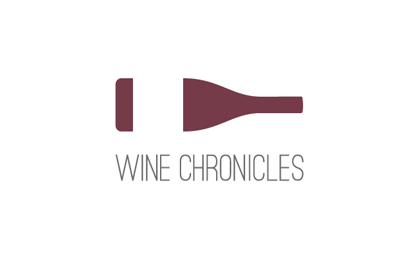 Wine Chronicles
Wine Chronicles
Share This